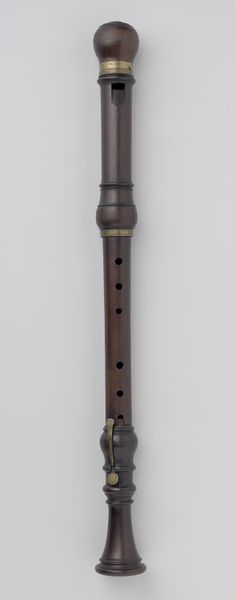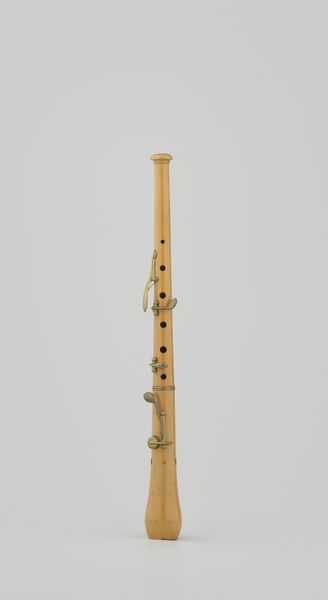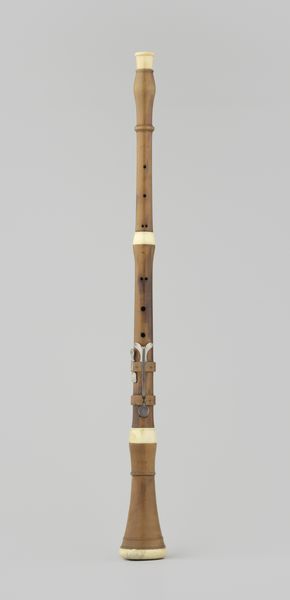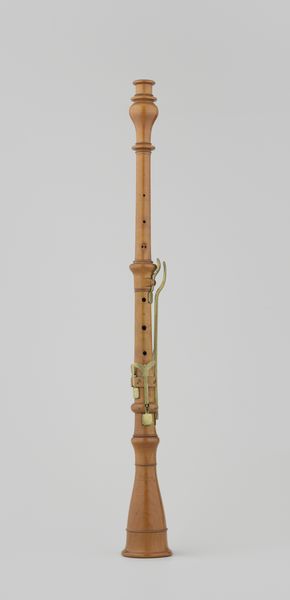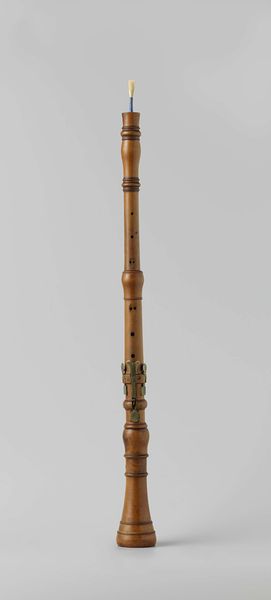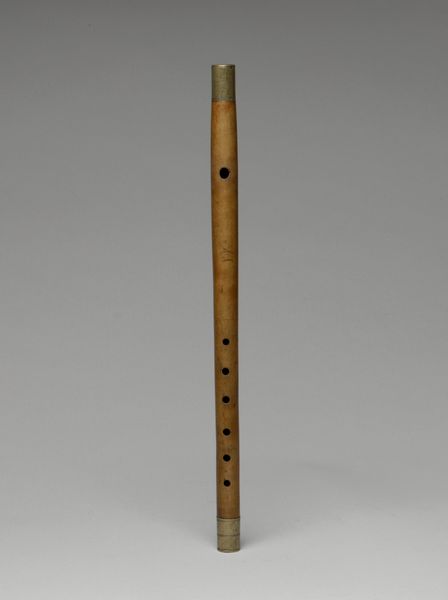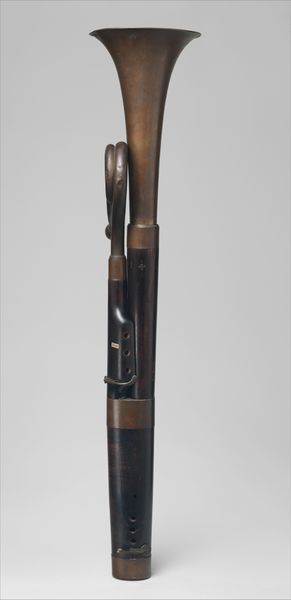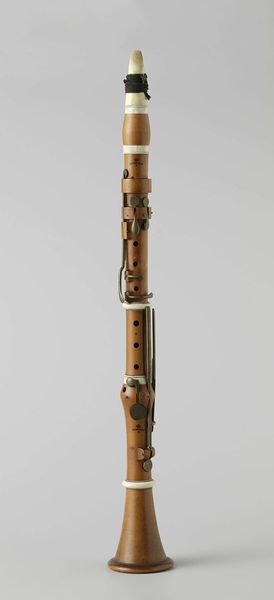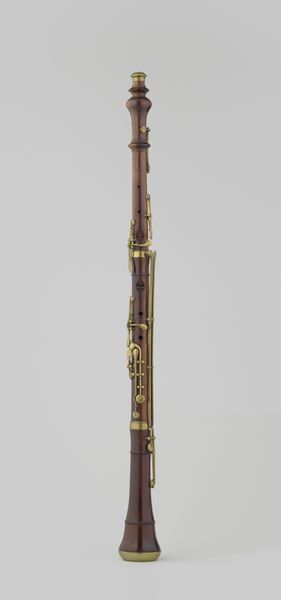
wood
#
wood
Dimensions: height 26.0 cm, diameter 3.0 cm
Copyright: Rijks Museum: Open Domain
Editor: We're looking at a section of an alto recorder, made around 1700 by Jan Steenbergen. It’s just the middle joint, crafted from wood, and its simplicity is striking. What I find curious is the absence of the complete instrument. What story do you think this fragment tells? Curator: A fragment it is, and fragments are powerful symbols. They speak to loss, to the passage of time, and to the incompleteness of memory. This solitary joint no longer fulfills its intended purpose – to create music, harmony. Yet, the potential remains. Consider: music, especially in the Baroque period, was intimately connected with emotional expression, or what they termed "affections." Do you think this small piece still holds the echoes of those affections? Editor: That’s an interesting thought. So, seeing it as more than just a piece of wood – but also, perhaps, an artifact loaded with historical musical practice? Curator: Exactly. The holes, the craftsmanship... They represent deliberate choices intended to produce specific sounds, specific emotional responses in the listener. The wood itself possesses its own symbolism too. What emotions or imagery does the wood grain itself suggest? Editor: Hmm, maybe a sense of grounding, of something organic and living – linking back to the music as a form of emotional expression? Curator: Precisely! And that’s where cultural memory resides. Each note that *would have* flowed from this recorder held meaning; it tapped into shared cultural understandings. So, this isn’t just an object; it's a relic of those expressions. Editor: That makes me see this lone piece in a whole new way – a sort of time capsule, resonating with lost melodies. Thanks for pointing out the hidden symbols! Curator: My pleasure! I find that viewing it as more than its literal form encourages exploration beyond its physicality.
Comments
No comments
Be the first to comment and join the conversation on the ultimate creative platform.
